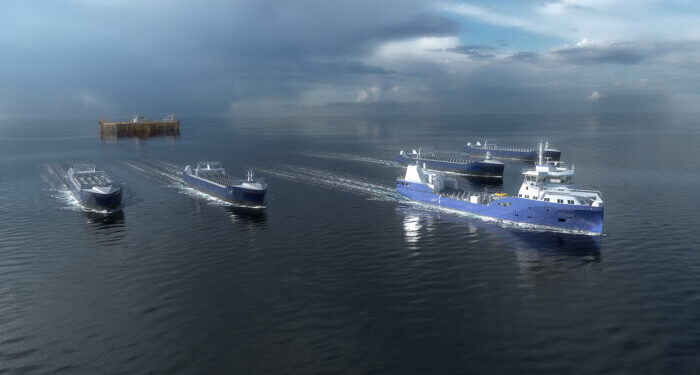European researchers are taking part in a project designing ships with varying degrees of autonomy, in efforts to improve trade and moving of goods in Europe, which has been facing barriers due to labour shortages.
Specifically, the project called AUTOSHIP is based on a three-part technology:
- the vessel control systems: this includes sub-systems for situational awareness, such as sensors, positioning systems or cameras and other technologies that enable detection of obstacles. The data from these sensors is then joined together, something called sensor fusion, and feeds back into the ship’s autonomous navigation system which makes steering decisions based on it.
- digital connectivity from vessel to shore
- shore-based systems.
Taking part in the project, Kongsberg Maritime designed two systems that enable auto berthing and auto crossing where the crew press a button, and the ship will dock.
For the time being, the crew is still on the vessel and can take action if they see a problem. The automatic system is installed on a passenger and car ferry operating in the Oslofjord and has been used in more than 80% of voyages. Yet even when a ship that uses this technology is fully uncrewed it would still be connected to a control centre on shore. Here, humans would remotely monitor the ships and its sensors, and be able to take over control manually.
Two ships bound for automation already sail across Europe. The first is a carrier that delivers fish feed along the west coast of Norway. The second is an inland cargo barge that operates in Flanders, the northern region of Belgium. Both are to be retrofitted for autonomous sailing as part of a project called AUTOSHIP.
Mc Jason McFarlane, Research & Innovation Manager at the Norwegian company Kongsberg Maritime, a participant in AUTOSHIP explained that there are a number of reasons to automate shipping; One is to increase the attractiveness of water-based transport, where labour can often be a significant proportion of operating costs. Another is to reduce road traffic and cut emissions. McFarlane notes that one barge, like the one they are testing in Flanders, can carry 300 tons of cargo which would replace 7,500 truck journeys per year. According to calculations from AUTOSHIP, this would reduce CO2 emissions per km by 90%. McFarlane says that automated ships could also sail more efficiently than if they had human operators, optimizing for engine power and speed.
Risks
Although automation will be fruitful for the industry, there are risks. Danitsja van Heusden-van Winden, Innovation Manager, Netherlands Maritime Technology commented that there are risks to having less people on board, which could undermine the business case, adding that
It will probably require workers to become more qualified, but it will also mean that their skills and labour will be utilised more efficiently.
Up to now, regulation remains a barrier. Many jurisdictions require a certain amount of people to be on board a vessel, defeating the purpose of automation. Both projects are in touch with regulators.
However, to assist the industry’s transformation towards automation, BIMCO is adjusting SHIPMAN 2009 Agreement to adapt in the new smart environment, as the shipping sector is already familiar with the agreement.
When it comes to labour shortage, it is supported that partial automation could be important for reducing costs and filling in labour shortages. Instead of having to operate a number of ships with full crews, a company could operate one fully crewed lead ship and a few follower ships with limited staff.
Following the example of AUTOSHIP, Tthe NOVIMAR project works on ‘platooning’ for inland and short-sea transport, where a partly automated ship follows a fully crewed leader vessel.
‘We don’t sail fully autonomously,’ said Danitsja van Heusden-van Winden, project coordinator of NOVIMAR and innovation manager at the Dutch company Netherlands Maritime Technology explained, adding that ‘For now there’s always at least one person on the ship.’
She added that the idea of this project is not to threat seafarers but require workers to become more qualified, but it will also mean that their skills and labour will be utilised more efficiently.
For now both projects are moving full steam ahead. NOVIMAR aims to do a real-life test at the end of 2020, while AUTOSHIP aspires to follow with a demonstration of their own in 2022. After these trials, which includes a sea crossing from Norway to Denmark for AUTOSHIP, ships could start becoming more autonomous, although much depends on how fast regulatory changes are implemented.

































































